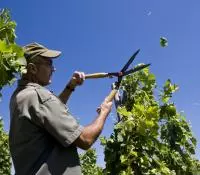- Respect the terroirs and preserve resources
Environmental Recommendations Guide
That sounds interesting : How can you produce wines in harmony with the ecosystems?
The Guide, currently being drafted* by the Syndicat des Côtes du Rhône, lists a set of practices intended to promote organic growing and encourage and support changes in growing practices such as ploughing the soil mechanically to control weeds or practicing selective grass cover or grass cover in one row in two.

Contents
The Guide
The Guide aims to promote alternative products to synthetic pesticides and to reduce the use and wastage of phytosanitary products in the vineyards by using more suitable equipment or by deploying alternative methods of protecting the vineyard.
For example, to combat grape berry moths, winegrowers can install synthetic pheromone diffusers to disrupt the mating of harmful insects in the vineyards.
On another chapter, in order to optimise the effectiveness of phytosanitary treatments (and therefore use less of them, particularly against mildew), wineries can install connected weather stations.
The Guide is careful to identify sensitive areas, particularly vineyard plots close to watercourses, which need to comply with stricter regulations and enforce a careful management of effluents in the winery.
And are the winegrowers and wineries really going down that path?
The information and support provided by the Syndicat des Vignerons des Côtes du Rhône are intended to help growing practices evolve towards a sustainable model to protect the quality of the air, the soil and water resources.
So far, we have seen an increase in the number of conversions to organic growing in the Côtes du Rhône and a sharp rise in the number of wineries and domaines engaged in the High Environmental Value (HVE) certification process.
Sources
* The first two information sheets on the planting of vegetation and the introduction of plant cover will be published in 2021.


